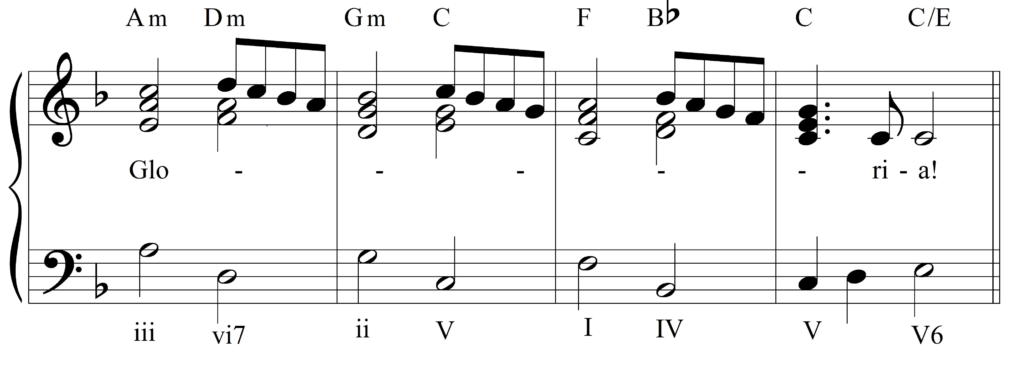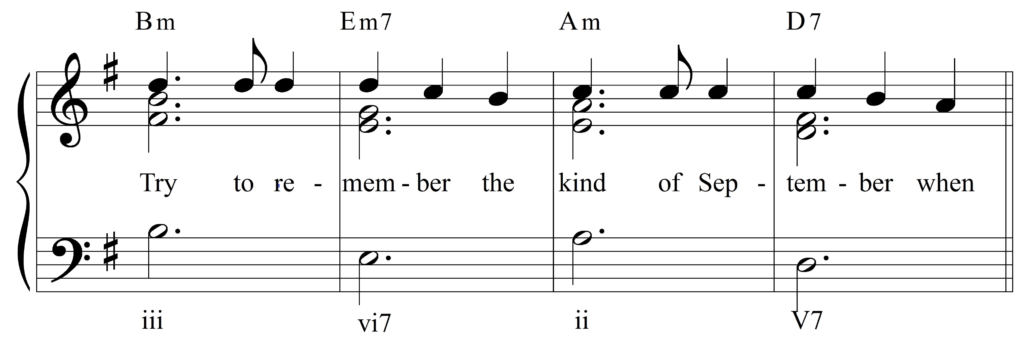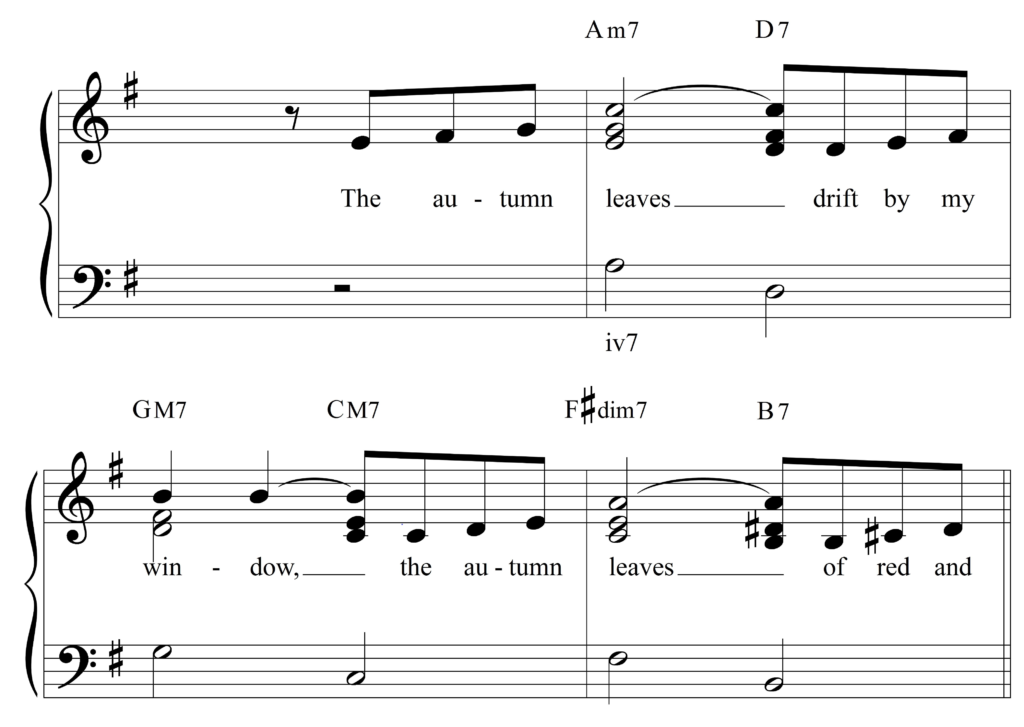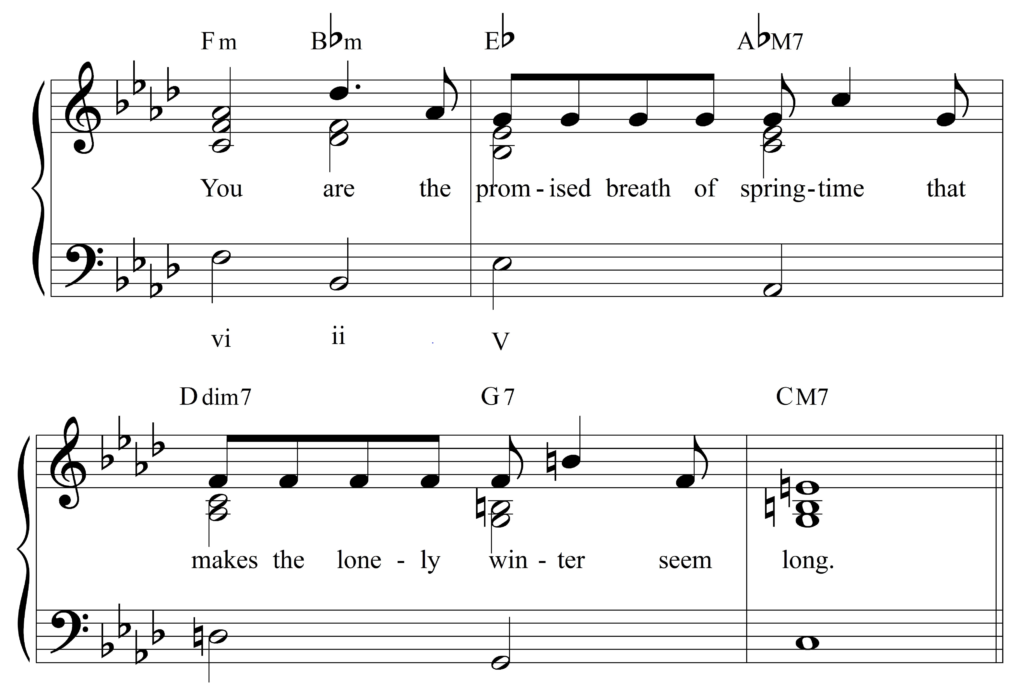Succession by Fifths: A Progression with Many Uses
As we listen to music we discover that there are chord progressions that lead our ears down [or up] predictable paths. The following sequential bass pattern [down a 5th, up a 4th, down a 5th, up a 4th] is used with many melodies
Example 1: Succession by Fifths in Familiar Melodies


Perhaps you’ve noticed that the above melodies begin with the 5th pitch of the scale. The following excerpt from “Try to Remember” also begins with the 5th pitch of the scale. You can find applications of this progression in different styles of music.
Example 2: Try to Remember

Lyrics: Tom Jones and Music: Harvey Schmidt
The pattern we’re observing is called “Succession by 5ths” or “Circle of 5ths.” You could continue to move down by 5ths, but you would eventually move beyond the bass range of the piano and other instruments. Changing direction by alternating between 5ths and 4ths solves the problem of range. Through a study of this progression in different songs, I’ve discovered that it doesn’t always begin with the 5th pitch of a major scale. In the song, “Autumn Leaves” the progression begins with 6th pitch of the E minor scale, and it is supported by the subdominant chord, Am7 (see Example 4).
Example 3: Autumn Leaves

Lyrics: Joseph Kozma; Music: French Melody
Jerome Kern used succession by 5ths throughout his song, “All the Things You Are.” The progression begins with the first pitch of the Ab major scale, and the supporting chord is Fm, which is Roman numeral vi in the key of Ab.
Example 4: All the Things You Are

Lyrics: Oscar Hammerstein; Music: Jerome Kern
In the preceding example, the descending scale line is slightly disguised by melodic embellishments. When improvising on a progression like this, it helps to be aware of the basic scale and chords as you add embellishments. Another function of “Circle of 5ths” is the strengthening of cadences as in the following excerpt from Londonderry Air, a familiar Irish melody:
I
Example 5: Succession by Fifths to Strengthen a Cadence (from “Londonderry Air” Irish Melody

In the following example a sustained pitch is supported by a succession of 5ths. This is rather common in some jazz styles (e.g. Misty by Erroll Garner, and “Smoke Gets in Your Eyes” by Jerome Kern)
Example 5: Succession by Fifths Used with a Sustained Pitch at a Cadence

As you listen with “informed ears” you’ll be delighted to discover this progression in many different styles of music. Thinking about what you are playing is an integral part of developing a command of chords. Eventually, your ear will lead your fingers to the right keys, for muscles have memory. Life-long learning can be rewarding. Let’s keep at it!
“Succession by Fifths” is the focus of Session Six in Bigger Steps.
Comments are closed.